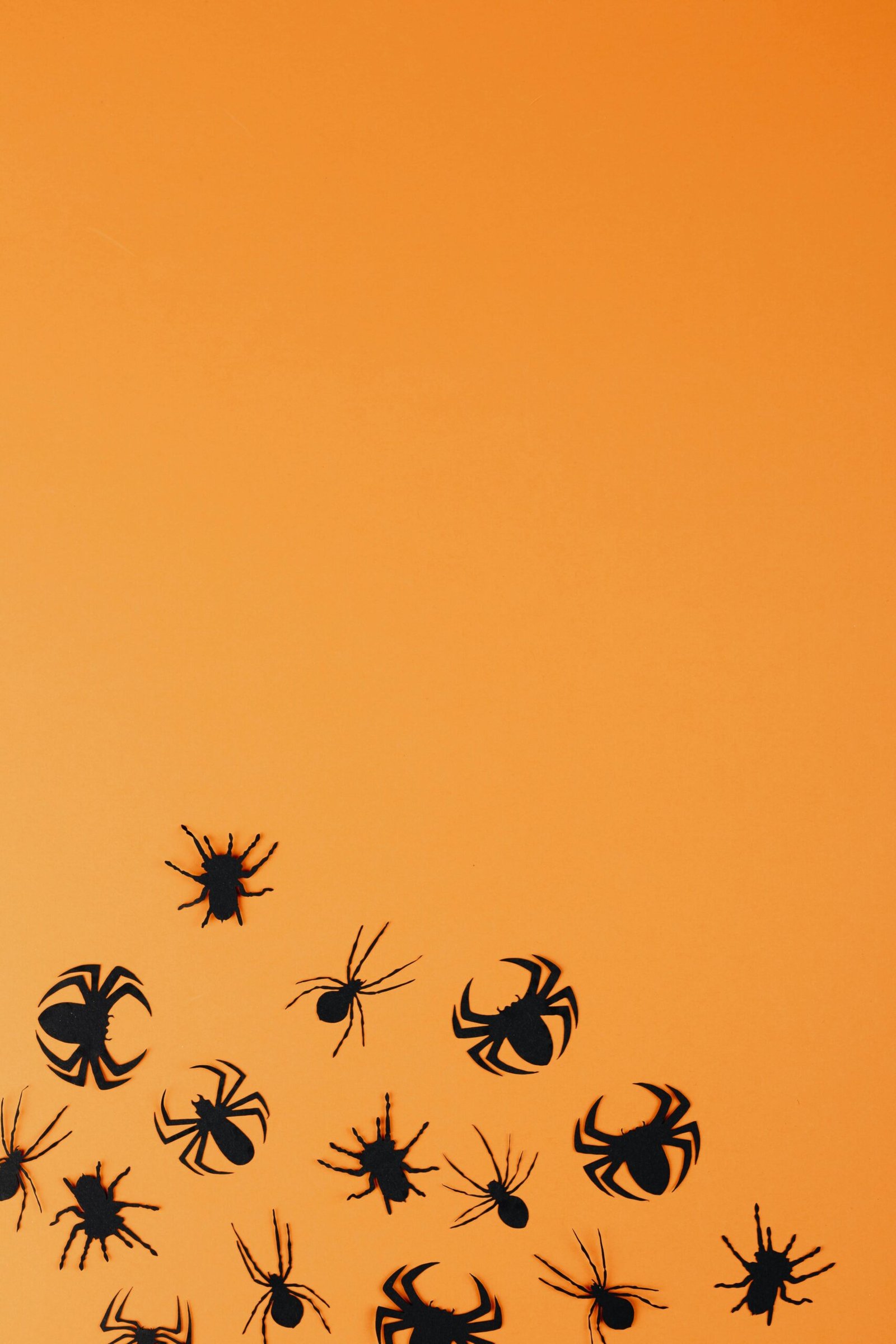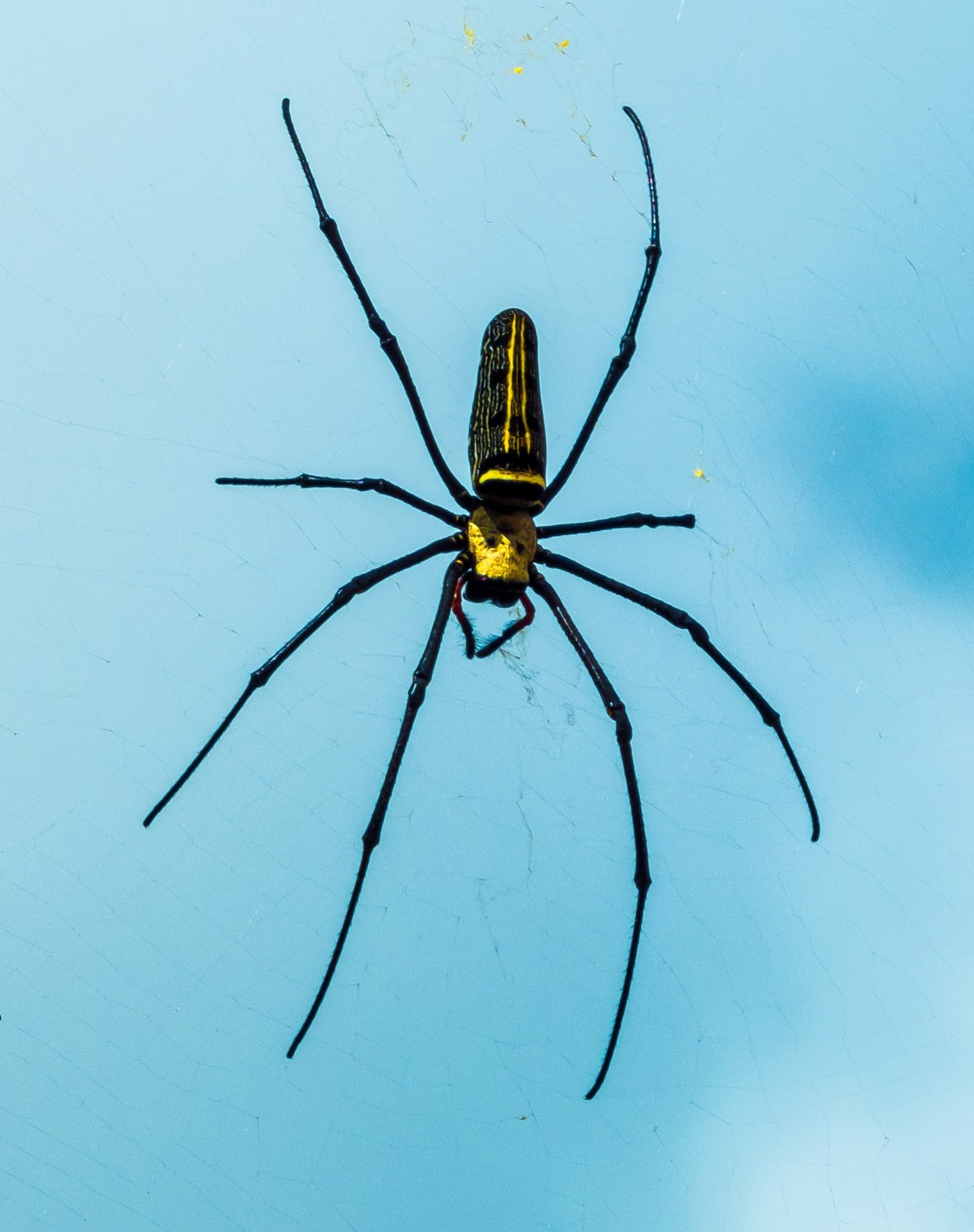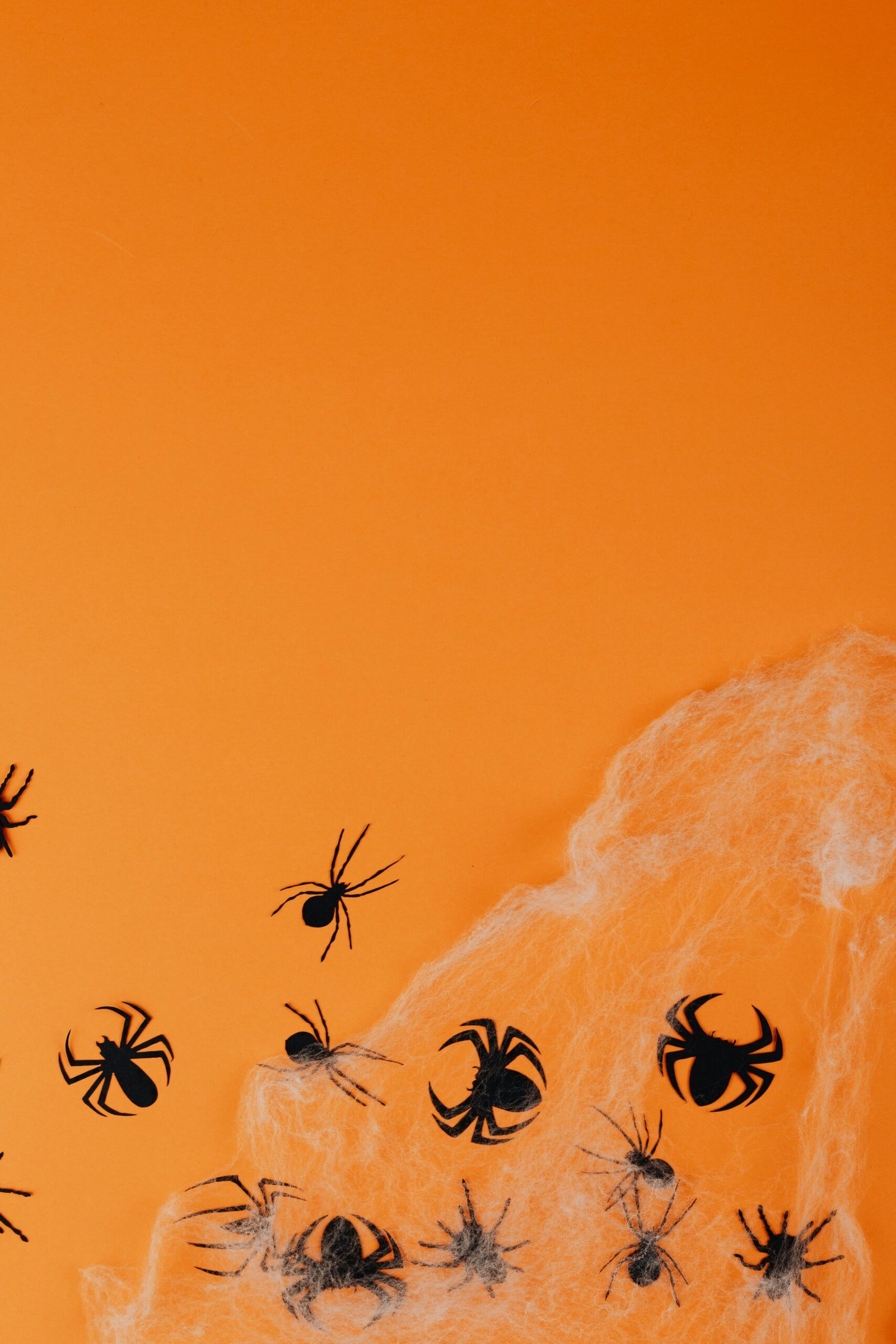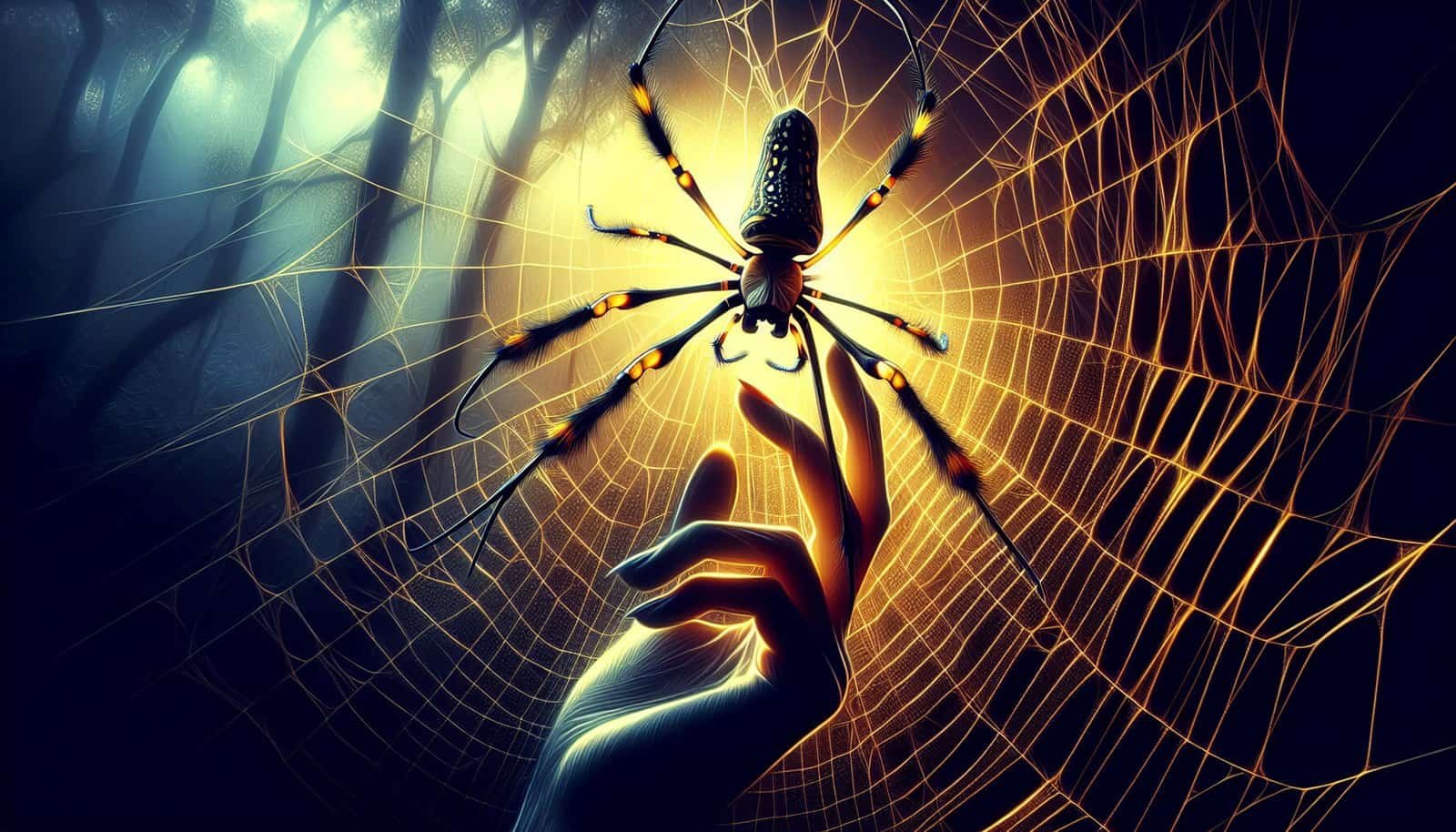Have you ever wondered how to properly handle and care for the enigmatic golden silk orb-weaver spider? These fascinating creatures, known for their stunning golden silk and intricate webs, may seem intimidating at first, but with the right knowledge and a friendly approach, you can learn how to interact with them safely and provide the care they need. In this article, we will explore some helpful tips and techniques that will ensure both your safety and the well-being of these amazing creatures. So, let’s embark on this adventure together and discover the secrets of handling and caring for the enigmatic golden silk orb-weaver spider.
Understanding the Golden Silk Orb-weaver Spider
The Golden Silk Orb-weaver Spider, also known as Nephila, is a fascinating arachnid species that can be found in various parts of the world. With its vibrant golden silk and intricate web designs, this spider is truly a remarkable creature to observe. In this article, we will delve into the physical characteristics, natural habitat, behavior, and lifecycle of the Golden Silk Orb-weaver Spider, providing you with a comprehensive understanding of this enigmatic species.
What is the Golden Silk Orb-weaver Spider?
The Golden Silk Orb-weaver Spider is a large and visually striking arachnid, known for its impressive web-building abilities. It belongs to the genus Nephila, which comprises numerous species found in different regions. These spiders are characterized by their prominent size, with females reaching up to five centimeters in body length. What sets them apart, however, is their captivating golden silk, which they use to weave large, intricate orb webs.
Physical Characteristics of the Golden Silk Orb-weaver Spider
The Golden Silk Orb-weaver Spider possesses distinct physical characteristics that make it easily recognizable. Females of this species typically have rotund bodies, adorned with yellow or golden markings that give them their name. Their legs display a combination of black, yellow, and brown hues, adding to their eye-catching appearance. Males, on the other hand, are considerably smaller and usually lack the vibrant colors seen in females. Additionally, these spiders have eight eyes arranged in two rows and long, spindly legs equipped with specialized spines to aid in capturing prey.
Natural Habitat and Distribution of the Golden Silk Orb-weaver Spider
Golden Silk Orb-weaver Spiders can be found in various regions across the globe, including Asia, Africa, Australia, and the Americas. Their natural habitats range from forests and grasslands to gardens and coastal areas. These spiders favor warm and humid climates, where they can thrive and spin their impressive webs. With the ability to adapt to different environments, the Golden Silk Orb-weaver Spider has managed to establish populations in diverse geographical locations.
Behavior and Lifecycle of the Golden Silk Orb-weaver Spider
The behavior and lifecycle of the Golden Silk Orb-weaver Spider are both intriguing and complex. These spiders are primarily nocturnal, spending their nights diligently constructing and maintaining their orb webs. During the day, they take shelter in their retreats, which are usually positioned near the center or edges of the web. When prey becomes entangled in the web, the spider quickly immobilizes it with its venom and proceeds to wrap it in silk for later consumption.
The lifecycle of the Golden Silk Orb-weaver Spider begins with courtship and mating. Male spiders take great risks to approach females, often waiting until they are fully mature before mating. After successful copulation, females lay large egg sacs containing hundreds of eggs. These sacs are carefully guarded and suspended in the web. Once hatched, the spiderlings disperse and undergo several molts before reaching maturity, a process that can take several months.
Setting Up a Suitable Habitat for the Golden Silk Orb-weaver Spider
Creating a suitable habitat for the Golden Silk Orb-weaver Spider is crucial to ensure their health and well-being in captivity. By understanding their needs and preferences, you can provide an environment that mimics their natural habitats and allows them to thrive.
Choosing the Right Enclosure for the Golden Silk Orb-weaver Spider
When setting up an enclosure for your Golden Silk Orb-weaver Spider, there are several factors to consider. Firstly, the enclosure should provide sufficient space for the spider to move and construct its web comfortably. A terrarium or a glass tank with a meshed lid is recommended to prevent escape while allowing proper ventilation. The size of the enclosure should be proportional to the spider’s size, ensuring it has ample room to maneuver.
Providing the Appropriate Temperature and Humidity
Maintaining the correct temperature and humidity levels within the spider’s enclosure is vital for its overall well-being. Generally, temperatures ranging from 75 to 85 degrees Fahrenheit (24 to 29 degrees Celsius) are suitable for the Golden Silk Orb-weaver Spider. It is important to avoid extreme temperature fluctuations or prolonged exposure to direct sunlight, as this can be detrimental to their health. Additionally, providing adequate humidity levels, around 70 to 80 percent, helps mimic their natural habitat and supports healthy molting processes.
Creating Hideouts and Webbing Spaces
Golden Silk Orb-weaver Spiders require suitable hiding spots within their enclosures where they can retreat and feel secure. This can be achieved by placing a variety of matter, such as pieces of bark, artificial plants, or rock formations, that create natural-looking hiding spaces. Ensuring the enclosure has sufficient vertical space allows the spider to construct its web, as they tend to suspend them vertically with anchor points on the sides.
Supplying Adequate Ventilation
Proper ventilation is crucial within the spider’s enclosure to maintain a fresh and healthy environment. The meshed lid of the enclosure allows for airflow while preventing any potential escapes. It is essential to regularly inspect the enclosure for any blockages or debris that may hinder ventilation.

Feeding the Golden Silk Orb-weaver Spider
Feeding your Golden Silk Orb-weaver Spider a suitable diet is essential to maintain its health and ensure proper growth and development. Understanding their diet, selecting suitable prey items, and establishing an appropriate feeding schedule are integral aspects of their care.
Understanding the Diet of the Golden Silk Orb-weaver Spider
The diet of the Golden Silk Orb-weaver Spider mainly consists of flying insects such as flies, mosquitoes, butterflies, and moths. Being orb-weaving spiders, they rely on capturing prey that inadvertently flies into their intricate webs. However, in captivity, it may be necessary to provide live prey for the spider to actively hunt and feed on.
Selecting and Preparing Suitable Prey Items
When selecting prey items for your Golden Silk Orb-weaver Spider, it is crucial to choose appropriate sizes that the spider can handle without difficulty. Ensuring the prey is alive stimulates the spider’s hunting instincts and natural behavior. Commonly available prey items such as fruit flies, house flies, or small crickets can be offered, but it’s essential to avoid feeding them insects collected from the wild as they may contain harmful pesticides or parasites.
Frequency and Quantity of Feeding
Determining the frequency and quantity of feeding depends on the age and size of the spider. Juvenile spiders may require feeding every two to three days, while adult spiders can be fed less frequently, typically every five to seven days. It is essential to monitor the spider’s behavior and body condition to ensure it receives an adequate amount of food. Overfeeding must be avoided, as it can lead to obesity and various health issues.
Handling and Safety Measures
Handling the Golden Silk Orb-weaver Spider requires careful consideration and adherence to safety precautions to ensure both your safety and the spider’s well-being. Although these spiders are generally docile, it is important to exercise caution and respect their nature.
Safety Precautions Before Handling
Before handling the Golden Silk Orb-weaver Spider, it is crucial to thoroughly wash your hands and wear appropriate protective gear, such as gloves, to avoid any potential cross-contamination or allergic reactions. Additionally, it is advisable to handle the spider in a calm and controlled environment, away from any potential sources of stress or disturbances.
Proper Techniques for Handling the Golden Silk Orb-weaver Spider
When handling the Golden Silk Orb-weaver Spider, gentle and delicate movements are key. It is essential to approach the spider slowly and calmly, allowing it to become accustomed to your presence. Using soft brushes or tools, carefully guide the spider onto your hand or another suitable surface for a short duration, ensuring you support its body gently and avoid putting excessive pressure.
Managing Venomous Bites and First Aid
While the Golden Silk Orb-weaver Spider possesses venom, it is generally considered harmless to humans. Nonetheless, it is wise to exercise caution and be prepared for potential bites. In the event of a bite, it is essential to remain calm and elevate the affected area. Clean the bite site with mild soap and warm water, then apply an antiseptic. If symptoms persist or worsen, seeking medical attention is recommended.

Maintaining the Health and Hygiene of the Golden Silk Orb-weaver Spider
To ensure the health and well-being of your Golden Silk Orb-weaver Spider, maintaining a clean and hygienic enclosure is crucial. Regular cleaning, monitoring and maintaining optimal conditions, and addressing any health issues promptly are key aspects of their care.
Regular Cleaning of the Enclosure
Regularly cleaning the spider’s enclosure is essential for maintaining a hygienic environment. Remove any uneaten prey items, shed exoskeletons, or any other debris from the enclosure regularly. Use a damp cloth or sponge to clean the surfaces, avoiding any harsh chemicals or cleaners that may be harmful to the spider.
Monitoring and Maintaining Optimal Conditions
Monitoring the temperature, humidity, and general conditions of the spider’s enclosure is vital for its health. Use a thermometer and hygrometer to regularly check and maintain suitable temperature and humidity levels within the enclosure. Any significant fluctuations should be addressed promptly to prevent stress or potential health issues.
Preventing and Treating Common Health Issues
Golden Silk Orb-weaver Spiders are generally hardy creatures, but they can still be susceptible to various health issues. Persistent signs of lethargy, loss of appetite, changes in web-building behavior, or discoloration may indicate underlying health problems. Consult with a veterinarian or an experienced arachnid specialist if you detect any concerning symptoms or behaviors to ensure prompt and appropriate treatment.
Breeding and Reproduction of the Golden Silk Orb-weaver Spider
Breeding the Golden Silk Orb-weaver Spider requires careful planning and preparation to successfully facilitate their reproduction. Understanding how to identify male and female spiders, creating an ideal breeding environment, and providing proper care for the resulting egg sacs and spiderlings are crucial steps in the breeding process.
Identifying Male and Female Golden Silk Orb-weaver Spiders
Differentiating between male and female Golden Silk Orb-weaver Spiders is relatively straightforward. Females are considerably larger than males and display vibrant coloring, while males are smaller and less striking in appearance. Additionally, female Golden Silk Orb-weaver Spiders possess a distinct genital structure known as an epigynum, which is absent in males.
Creating the Ideal Environment for Breeding
Creating the ideal environment for breeding requires replicating the natural conditions that trigger the mating behavior of Golden Silk Orb-weaver Spiders. Ensure the enclosure is spacious, with ample anchor points for the male to approach the female’s orb web. Simulating natural temperature and humidity conditions is essential, as fluctuations may disrupt mating behavior.
Caring for the Egg Sacs and Spiderlings
Once mating is successful, female Golden Silk Orb-weaver Spiders carefully produce egg sacs containing hundreds of eggs. These sacs should be left undisturbed within the web, as the female will guard and protect them until they hatch. It is critical to maintain optimal temperature and humidity levels during this period to support healthy development. After hatching, the spiderlings will disperse throughout the enclosure, and their care should follow the guidelines outlined for juvenile spiders.

Addressing Common Challenges and FAQs
As with any captive creature, the care and handling of Golden Silk Orb-weaver Spiders may present challenges. Understanding how to address aggression or defensive behavior, safely handle molting processes, prevent escapes, and addressing frequently asked questions can help ensure a successful and enjoyable experience interacting with these remarkable spiders.
Dealing with Aggression or Defensive Behavior
Golden Silk Orb-weaver Spiders are typically docile and non-aggressive towards humans. However, certain circumstances, such as feeling threatened or disturbed, may trigger defensive behavior. If the spider displays signs of aggression, such as raising its front legs or vibrating its web aggressively, it is best to give it space and avoid further interaction until it calms down.
Handling Molting and Shed Exoskeletons
Molting is a natural and crucial process for the growth and development of Golden Silk Orb-weaver Spiders. During this time, the spider may become more reclusive and sedentary. It is essential to provide a quiet and undisturbed environment to support the molting process. After molting, the spider will shed its exoskeleton, which should be left undisturbed as it serves as a valuable nutrient source for the spider.
Preventing Escapes and Spider Loss
Preventing escapes and minimizing the risk of spider loss can be achieved by ensuring a secure enclosure with a properly fitted meshed lid. Regularly inspect the enclosure for any potential gaps or weaknesses that the spider may exploit to escape. Additionally, providing a peaceful environment with minimal disturbances reduces stress and the likelihood of the spider attempting to escape.
Frequently Asked Questions about Golden Silk Orb-weaver Spiders
Q: Are Golden Silk Orb-weaver Spiders dangerous to humans? A: While they possess venom, Golden Silk Orb-weaver Spiders are generally harmless to humans. Bites are rare, and any symptoms are usually mild and resolve on their own. It is advisable to exercise caution and follow proper handling techniques.
Q: Can Golden Silk Orb-weaver Spiders be kept as pets? A: Yes, Golden Silk Orb-weaver Spiders can be kept as pets by enthusiasts experienced in handling and caring for arachnids. It is important to research their specific needs and ensure you can meet their requirements before keeping them as pets.
Q: How long do Golden Silk Orb-weaver Spiders live? A: The lifespan of a Golden Silk Orb-weaver Spider can vary depending on various factors such as species, sex, and individual health. Typically, females live for one to two years, while males have shorter lifespans of several months.
Q: Do Golden Silk Orb-weaver Spiders require special lighting? A: Golden Silk Orb-weaver Spiders do not require special lighting beyond ambient room light. They are primarily active during the night and prefer dim environments during the day.
Appreciating the Importance and Conservation of Golden Silk Orb-weaver Spiders
Golden Silk Orb-weaver Spiders play a crucial role in ecosystems where they are found and also possess several unique characteristics that make them worthy of conservation efforts. Understanding their ecological role, the threats they face, and the different ways individuals can contribute to their conservation is essential in ensuring their long-term survival.
Ecological Role and Benefits of Golden Silk Orb-weaver Spiders
As top predators in their habitats, Golden Silk Orb-weaver Spiders help control populations of flying insects, potentially reducing the prevalence of disease-carrying pests. Additionally, their impressive orb webs contribute to the overall balance of ecosystems, providing shelter for countless small creatures and acting as a visual spectacle for humans.
Threats and Challenges to Golden Silk Orb-weaver Spider Populations
Several threats and challenges pose risks to the survival of Golden Silk Orb-weaver Spider populations. Habitat loss due to deforestation, urbanization, and agriculture can severely impact their ability to find suitable environments for survival. Climate change, pesticide use, and pollution also contribute to their vulnerability and may disrupt their natural life cycles.
Conservation Efforts and Ways to Contribute
Conservation efforts focused on preserving the habitats of Golden Silk Orb-weaver Spiders are vital to their survival. Supporting organizations dedicated to arachnid conservation, educating others about the importance of these creatures, and participating in habitat restoration initiatives are all ways individuals can contribute to the conservation of these remarkable spiders.

Conclusion
The Golden Silk Orb-weaver Spider is a truly remarkable arachnid that captivates with its stunning appearance, intricate web designs, and vital role in ecosystems across the globe. By understanding their physical characteristics, natural habitat, behavior, and lifecycle, as well as how to care for them in captivity, we can appreciate and foster a deep respect for these enigmatic creatures. Through responsible handling, suitable habitat setups, proper feeding, and the maintenance of their health and hygiene, we can ensure that future generations will have the opportunity to admire and learn from the Golden Silk Orb-weaver Spider. Together, we can contribute to their conservation and help preserve their place in the natural world.
